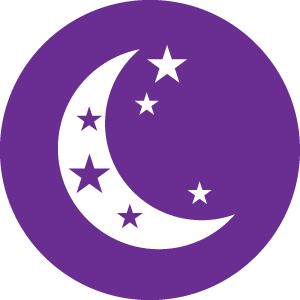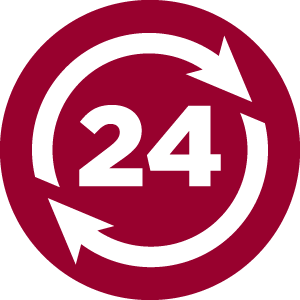Sugar - the good, bad and ugly...

We all know how tempting it can be to have one too many chocolates or an extra slice of cake, even when we know it would be healthier not to!
Scientists suggest that we are primed to desire sugar at an instinctive level as it plays such a vital role in our survival. Glucose is particularly important to the brain as it provides a major source of fuel to the billions of neuronal nerve cells. Neurons need a constant supply from the bloodstream as they don’t have the ability to store glucose themselves. As diabetics know, someone with low blood sugar can quickly lapse into a coma.
It’s important to spot the hidden sugars in food, as this is where many people don’t realise their dietary mistakes lie. Sugar isn’t just found within sugar on a food label. Sugar can ben within a number of other ingredients such as fructose, lactose, sucrose, maltose, glucose and dextrose. It is possible to choose healthier, natural sugars – artificial sweeteners should be avoided altogether!
For people living with diabetes, knowing which sugars in foods are good to consume and which should be avoided is often difficult.
There’s a lot of confusion between whether you can have fruit smoothies or whether you should stick to just pure fresh fruit – so on nutrition and hydration week – here’s a guide to the differences:
FRUCTOSE
The main sugar culprit is Fructose – or High Fructose Corn Syrup (HFCS). Food companies use HFCS is many foods labelled as ‘low fat’ to make up for the lack of taste due to less fat.
All fruit, fruit juices and smoothies contain a naturally occurring sugar called fructose. Fructose from whole fruit doesn’t add to your intake of free (or added) sugar, but in fruit juice or a smoothie it does
FREE ADDED SUGAR
Free (added) sugar includes the sugars added to foods by manufacturers, e.g. in cakes, chocolates, jam, some pasta sauces, fizzy drinks and breakfast cereals. It also includes the sugar found in fruit juices, smoothies and honey.
A recent report by the Scientific Advisory Committee on Nutrition (SACN), stated that we need to reduce our intake of free (added) sugars by half.
The report recommends that we should consume no more than 5 per cent of our energy from free sugar. This means the maximum daily intake of free (added) sugar should be:
- 19g, equal to 5 cubes or 5 tsp of sugar, for children (aged 4 to 7)
- 24g, equal to 6 cubes or 6 tsp of sugar, for children aged (7 to 10)
- 30g, equal to 7 cubes or 7 tsp of sugar, for children (over 11) and adults
Eating too much free (added) sugar contributes towards obesity, tooth decay and also puts people at risk of Type 2 diabetes.
The report clearly states that we do not need to cut down our intake of whole fruit and, in fact, recommends that we eat more.
Why do I need to watch fruit juices and smoothies?
Fructose adds to your intake of free (added) sugars. Whole fruit, on the other hand, does not.
Whole fruit contains fibre (roughage), vitamins and minerals, which are good for your overall health. The fibre helps to slow down the speed the fructose is absorbed into your blood stream and can help you feel fuller for longer. This is why it’s better to eat whole fruit, rather than fruit in the form of juice or a smoothie.
Fruit juice and smoothies, on the other hand, have most of the fibre (roughage) removed when they are made and it’s very easy to drink large quantities in a short space of time. This means you could be drinking a lot of extra calories, carbs and sugar.
We know that too much of our sugar intake is coming from juices and smoothies, so it makes sense to cut down. The good news is that we are not eating enough fruit, so this is something you can eat more of. Though be mindful of serving sizes – it’s easy to overdo the dried fruit, grapes and tropical fruits without really thinking about it.
You can include fruit as part of your meal or as a snack, whichever suits your healthy eating plan. Don’t forget fresh, tinned and dried fruit all count.
Although it’s better to eat whole fruit than drink fruit juice or smoothies, if
you want to have some it’s better to limit the quantity to the recommended portion of 1 small glass a day (150ml) and make sure your drink goes further by diluting it with water.’
Be aware of the carb, sugar and calorie content and how this may affect your blood sugar levels, and if you drink them with your meal think about how much carbohydrate you are having overall.
For example, if you usually have a couple of slices of bread with your breakfast, on the day that you decide to have a small glass of juice, just have one slice of bread to make room for the extra carbs coming from the fruit juice. It’s an option to ensure that you don’t have to deal with high blood sugar levels as a result of having the juice.
Smoothies are also better if you make them yourself because you can put in the whole fruits, which include the fibre (roughage). You can also be sure that no other sugar has been added, which can sometimes creep into shop-bought ones.
If I have diabetes, should I avoid sugar completely?
There’s no need to totally avoid sugar, but aim to cut down on your free (or added) sugar intake. Remember, this doesn’t include sugar present in whole fruit, so try to meet the five a day target. This will help protect you against stroke, heart disease and certain cancers.
For more information on sugars / sugar intake and managing diabetes – go to www.diabetes.org.uk







 Tweets by @abs_healthcare
Tweets by @abs_healthcare